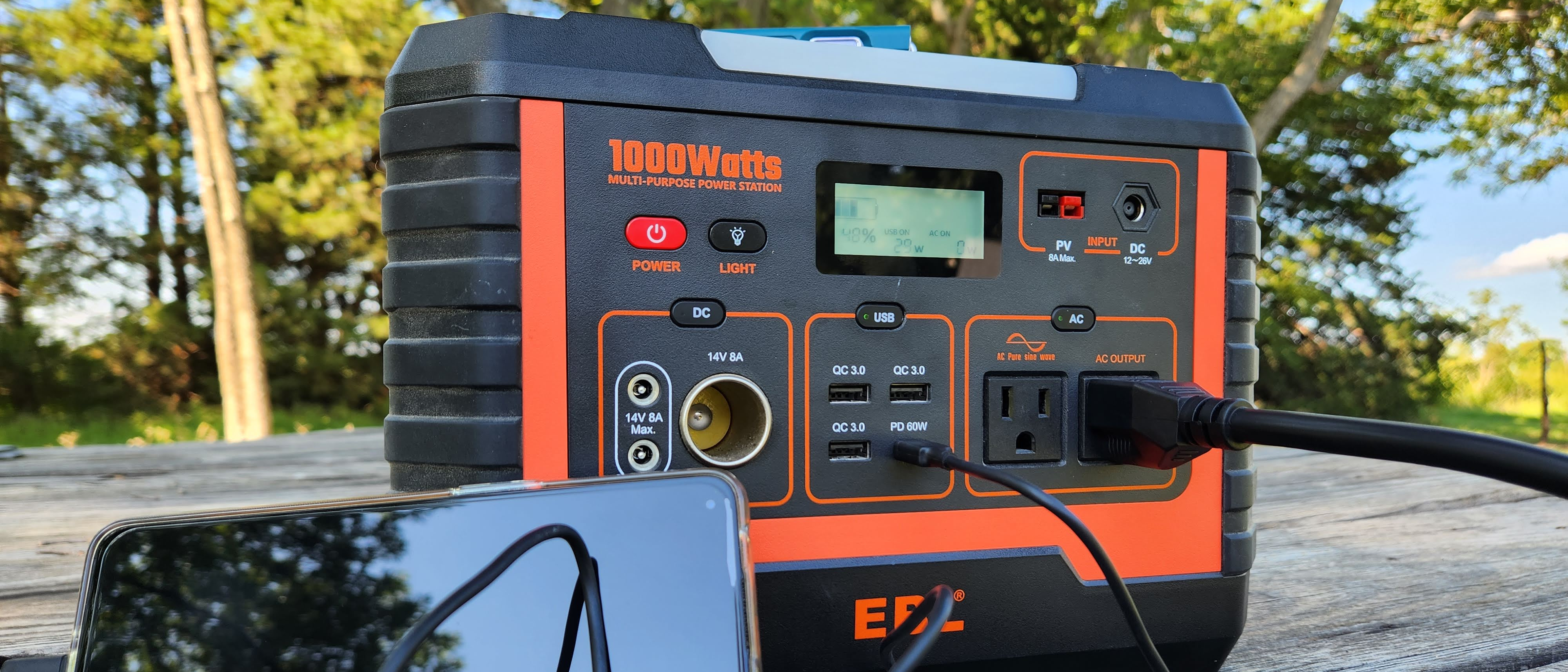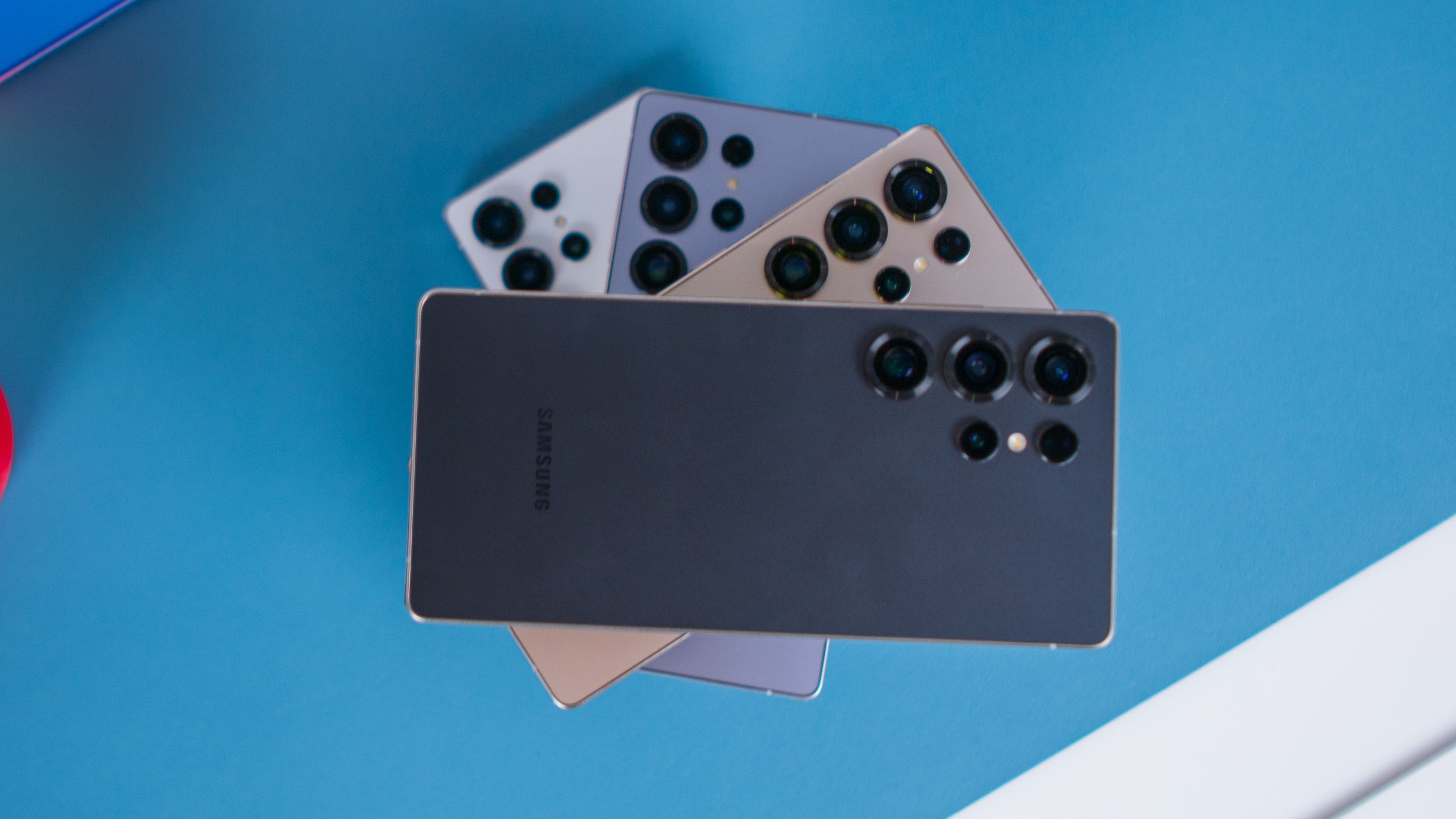Android Central Verdict
The EBL Voyager 1000 Portable Power Station keeps things pretty simple, but provides solid performance with 1000W of power. There are plenty of ports to choose from, along with a wireless charging pad and a built-in LED light, packed into a relatively compact device.
Pros
- +
Compact size with impressive output
- +
A good variety of output ports
- +
Supports multiple methods of recharging
- +
Built-in LED light
Cons
- -
The maximum recharge rate is a little low
- -
Would prefer at least two USB-C ports
- -
The cooling fan can be a bit loud
Why you can trust Android Central
The portable power station space has been picking up steam in the past couple of years, with more options, innovation, and more power in smaller packages. Typically, if you want a compact power station, you are going to have to sacrifice capacity and output wattage. The EBL Voyager 1000 power station brings 1000W of output in a device closer to the size of a 300W unit. I've spent a few months testing this power station out, and there's a lot to like about it.
EBL Voyager 1000: Price and availability

The EBL Voyager 1000 first released in December 2021 for $999. Like most other portable power stations, the Voyager 1000 comes in a single color option — black and orange. The device is available through Amazon for $948, plus a $400 coupon, making it $548. It's also available on EBL's website for a discounted price of $659.99 for a limited time.
EBL Voyager 1000: What's good
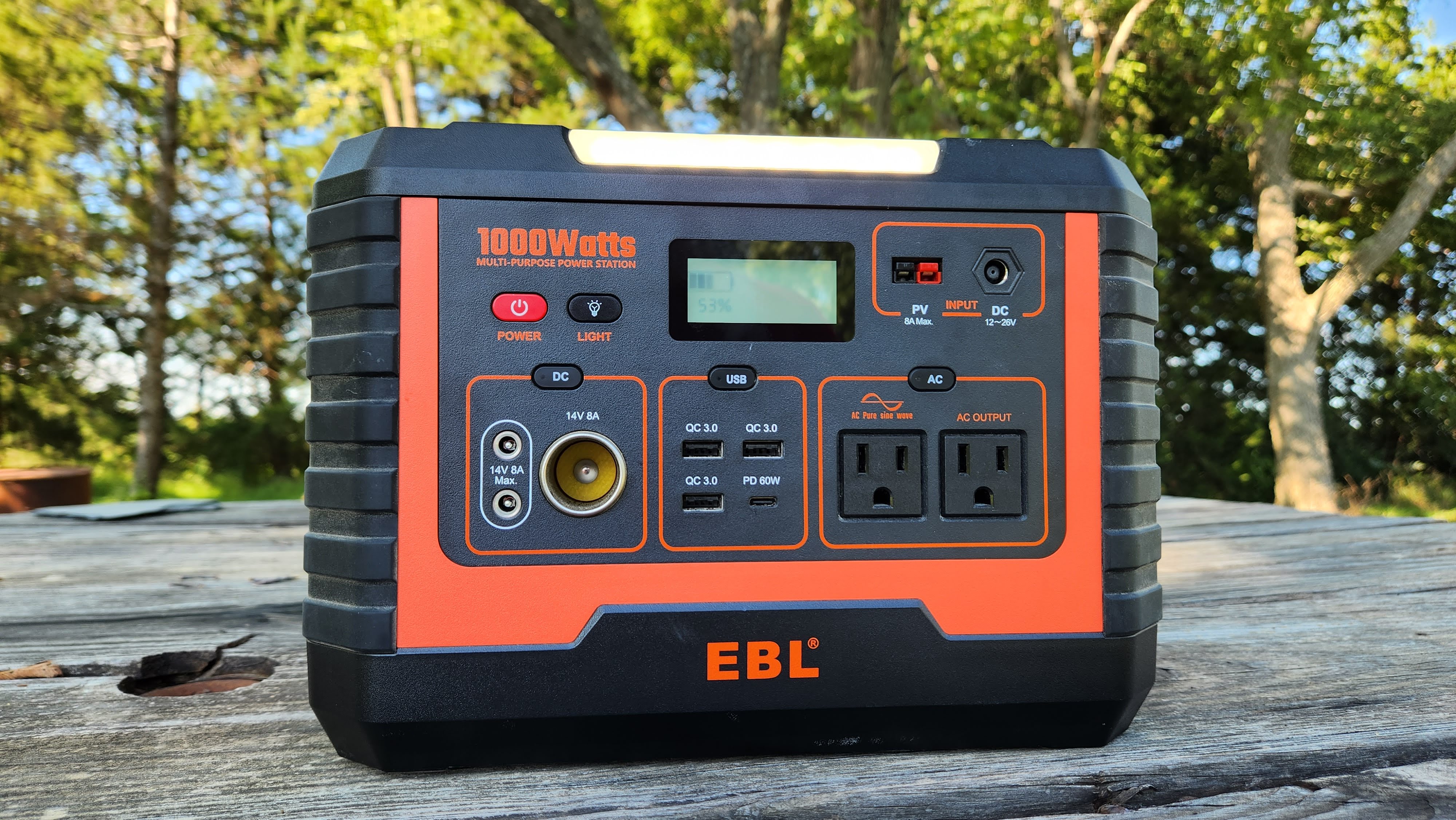
Power stations are becoming more popular these days for various reasons. If you are curious about some of those reasons, I put together a few as to why everyone should have a portable power station. But depending on your own needs, you'll have a decision to make about what your limits are for cost, space, and the appliances you want to run.
The EBL Voyager 1000 does a great job of offering 1000W of power and plenty of port options inside of a compact footprint.
As I said at the beginning of this review, big capacity and big power mean big power stations. It also generally means big money, where the standard for pricing has been one dollar for every watt-hour (Wh). While the pricing still remains mostly true, this EBL Voyager 1000 manages to squeeze 999Wh of capacity with 1000W of output into a pretty compact product.
You'll find all your input and output ports on the front of the power station. For output, you'll find two AC wall outlets, three QuickCharge 3.0 USB-A ports, a USB-C with 60W PD, a 12V DC car socket, and two DC5521 ports.
When it's time to recharge the Voyager 1000, you have three choices — use the DC port with either the wall adapter or car adapter, or you can charge using the Anderson port with solar panels. With the wall adapter, the unit will charge at a maximum of 150W, and via solar, it will handle up to 200W.
| Header Cell - Column 0 | EBL Voyager 1000 |
|---|---|
| Dimensions | 11.5 x 8.5 x 8.5 inches |
| Weight | 23.1 pounds |
| Display | 2-inch (diagonal) LCD |
| Colors | Black and orange |
| Battery | 999Wh, Li-ion |
| AC Output (2) | 110VAC, 60Hz, 1000W Pure Sine Wave |
| Car Charger Output | 14V, 8A |
| DC5521 Port Output (2) | 14V, 8A per port |
| Quick Charge 3.0 Output USB-A | 18W max |
| USB-C PD Output | 60W max |
| DC Input | 90W Max |
| Wireless charger output | 10W |
| Solar Charger Andrson MPPT Input | 200W Max |
| Car Charger Input | DC 12V, 8A Max |
| Maximum Charging Input | 150W |
| Connectivity | 🚫 |
| Overload protection | 1100±80W |
| Water and Dust Resistance | 🚫 |
| Operating Temperature | 14-104F (-10-40℃) |
| Expandable | 🚫 |
| Bult-in LED lamp | ✔️ |
One of my favorite features that all of the best power stations should have is a built-in LED area lamp — and the EBL Voyager 1000 has one. These are great because in an emergency situation, like my colleague Namerah, you likely won't have light. Sure there are flashlights, but if you need power for devices, having a light right there at the source of your energy is wonderful. Plus, the light is handy in other situations when it's dark.
Get the latest news from Android Central, your trusted companion in the world of Android
I'm so glad to see that EBL decided to include a built-in LED lamp on the Voyager 1000.
Finally, the LCD display is the last feature to note on the front of the unit. The display is relatively simple and shows the necessary information. You'll see an image of a battery and how full it is with a percentage underneath. The screen also will show how much power is going out from each source (USB, DC, AC), and how much is coming in. I do wish it gave an estimate of how long until full or empty.
Moving to the top of the Voyager 1000, we find a fold-down handle, which aids in the overall compactness, and a wireless charging pad. Turning on the wireless charger isn't entirely clear, as there isn't a button dedicated to it. Instead, to turn on the 10W charger, you press the USB button. Not a big deal, but worth noting.
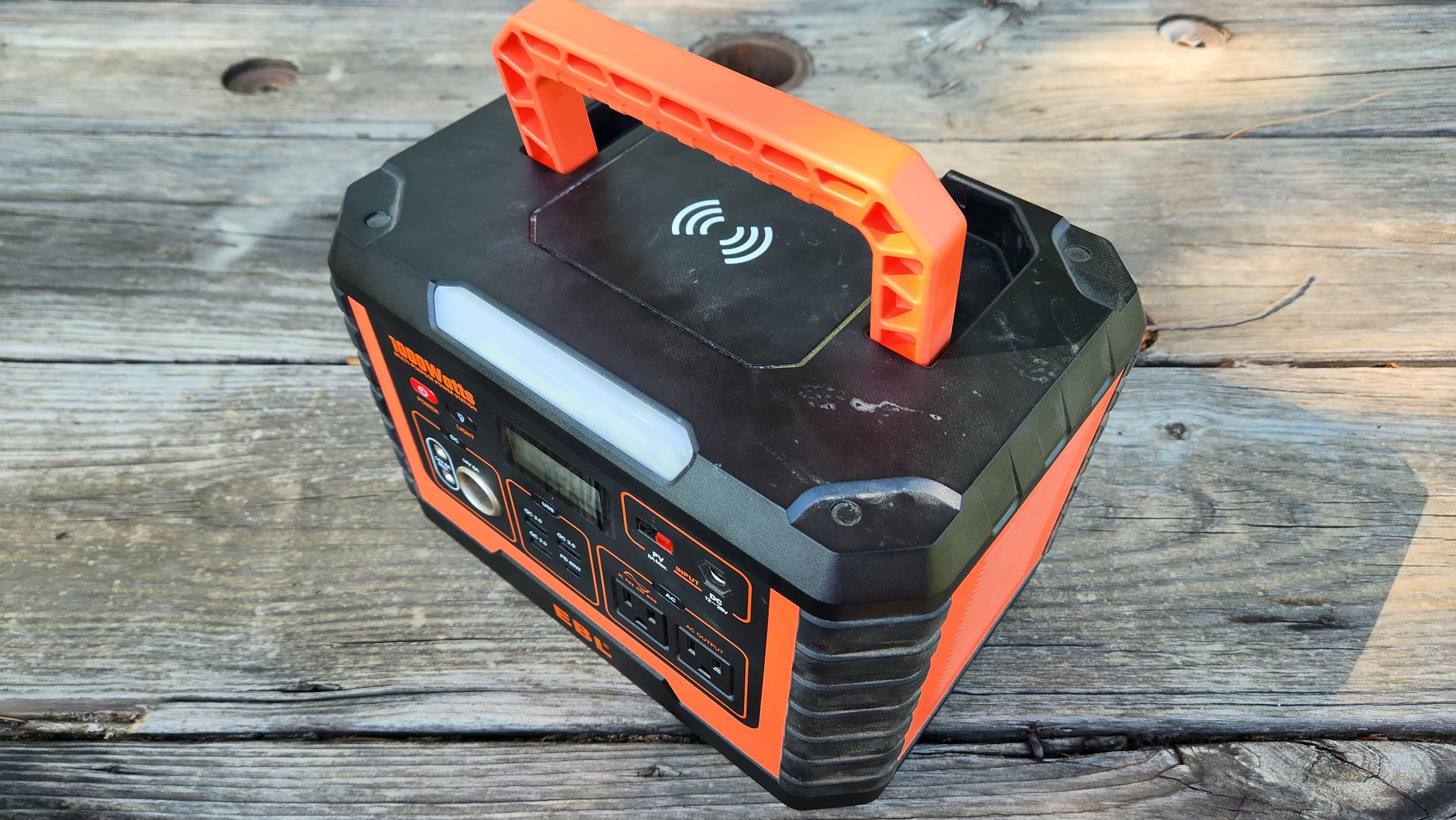
Much like when I reviewed the Fanttik EVO 300 power station, EBL is using a lithium-ion battery for the Voyager 1000. Similarly, it also isn't listing the lifespan of the battery. Most other power stations that opt for this battery chemistry offer 500 charging cycles from 0-80%. So, it should still last you quite a long time.
In testing this power station, I have put it through quite the variety of tasks. It's been a wonderful addition to my camping trips thanks to the smaller size, yet very capable 1000W output. With this kind of output rating, the number of devices it can power is quite expansive.
It can charge up your laptops, phones, drones, and more. But that power starts to benefit users with common household appliances like TVs, small refrigerators, fans, coffee makers, and more. I used it for all those things in my testing, along with running some tools like drills and small saws when working on projects where I didn't have an outlet nearby.
EBL Voyager 1000: What's not good
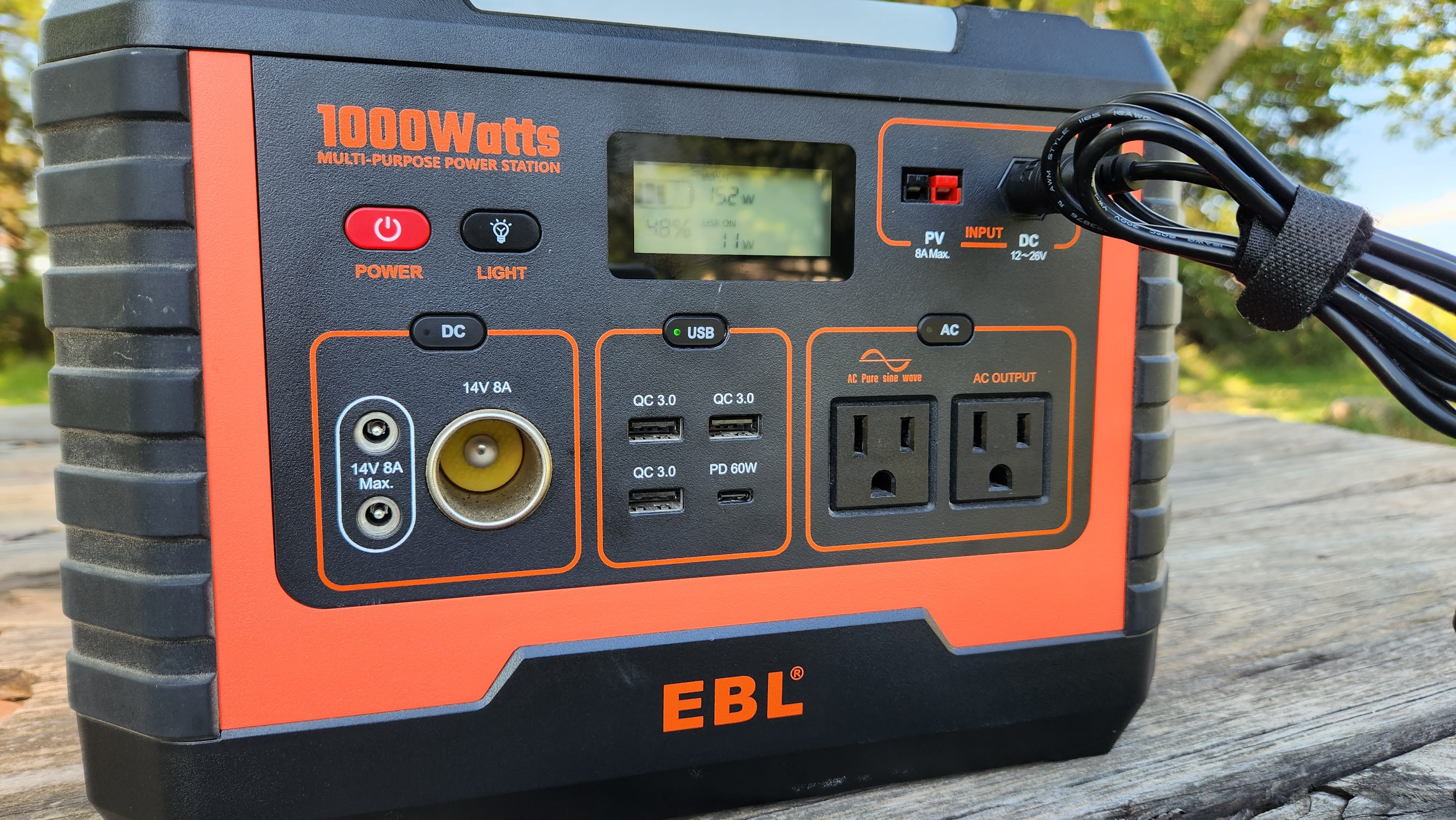
While there is a lot to like about the EBL Voyager 1000, the thing I wish was better is the charging rate. Using the included wall adapter, the power station is capped at 150W. While that would be really fast for something like the best cell phones that have much smaller batteries, when trying to recharge a 999Wh, it takes longer than I'd like.
While on the subject of the wall adapter, I've said this in other reviews, and it is still true, and I still understand why these adapters are so bulky. I know that if it were integrated into the unit, it would ruin one of its best features, compactness, but it's no fun lugging the adapter around. So adding in/out functionality to the USB-C port would give an alternative wall charging method. Even if the wall adapter stayed at 150W max and the ability to use the USB-C port supported input and output, it would help out.
Oh, also in regards to the USB ports, I appreciate the three QC3.0 USB-A ports, but with more devices utilizing the benefits of USB-C to USB-C — I wish there were at least two of those ports available. I don't think this is a significant issue, but one worth being aware of.

A couple of other things to note that are a bit on the nitpicky side of things is the cooling fans can be quite loud when they are on, and there's no port covers. The issue of the fans don't inhibit the capabilities of the Voyager 1000, but depending on when or where you're using the power station, those fans could become very annoying very quickly.
As for the port covers, finding covers for the AC outlet is pretty easy. But the one that really bugs me is the 12V car socket. It's a big hole that's just asking to get junk in it, and could be an issue when you need to use it. In general, having covers on all unused ports is a good idea just to keep dirt and grime from making its way into the power station, or messing up a charging cable.
EBL Voyager 1000: Competition
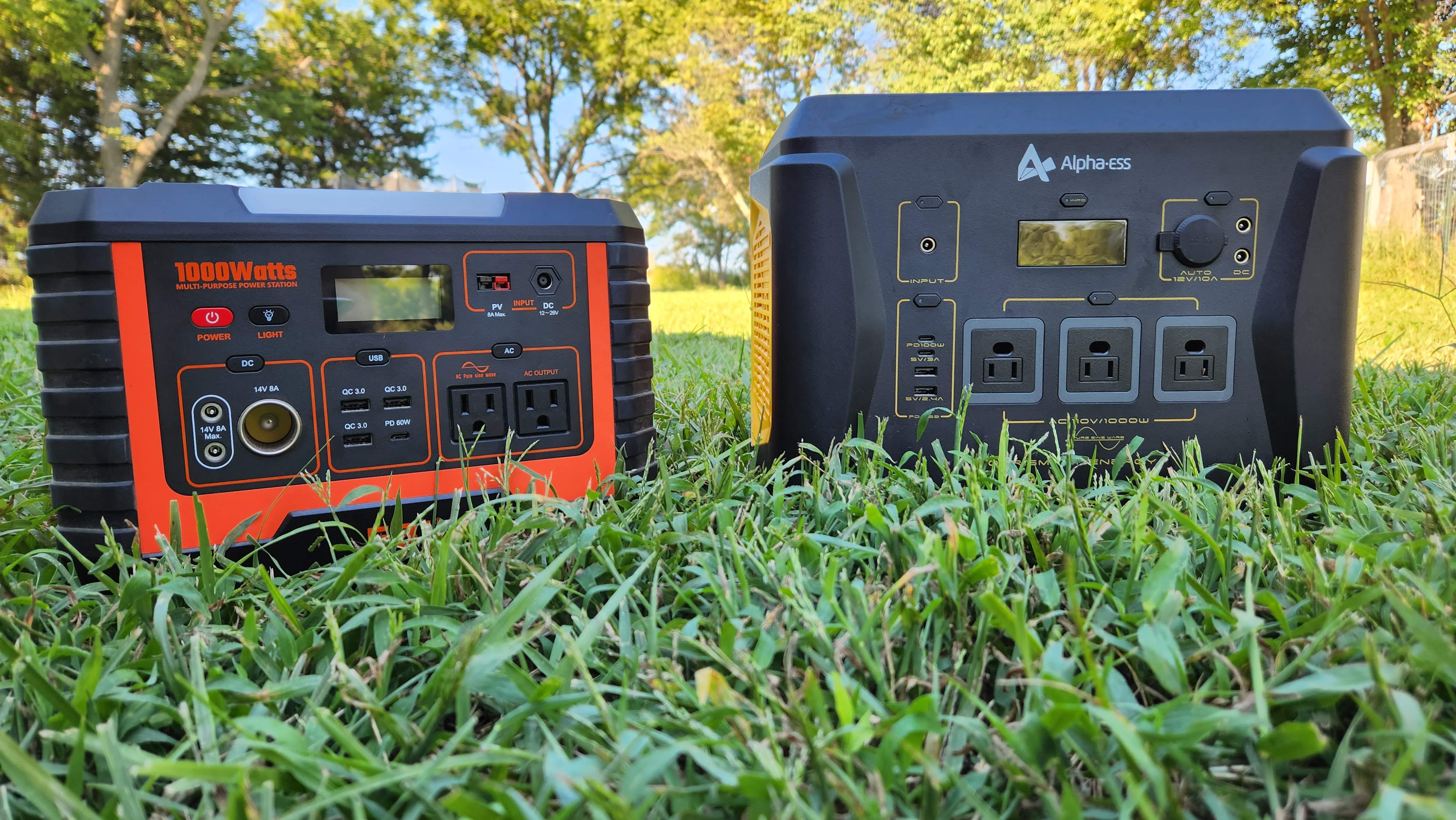
The portable power station space is rapidly expanding, with new devices launching all of the time. Today, two units that have similar output options, price, and capacity are the AlphaESS AP1000 and the EcoFlow Delta 2.
Starting with the AlphaESS AP1000, it offers a similar form factor to the EBL Voyager 1000 but a few additional features. While I haven't been able to write up my review of it just yet, I have been testing the unit for some time, and it has a lot to like. It features a 1036Wh lithium-ion battery offering up to 1000W of continuous power and a massive 2000W surge rating. That surge rating means that if you have multiple devices plugged into the unit, and something like a refrigerator's compressor turns on, the AP1000 can handle that sudden increase in power requirement.
As for output ports, you get three AC outlets, two USB-A and two USB-C, a 12V car socket, and two DC5521. AlphaESS also included two wireless charging pads on the top of the unit. Input options include the bulky wall adapter, solar, car charger, or USB-C port. You also get the handy LED area light as well. This unit is a few pounds heavier and a bit bigger than the EBL Voyager 1000 and currently selling for a higher $999 on Amazon.
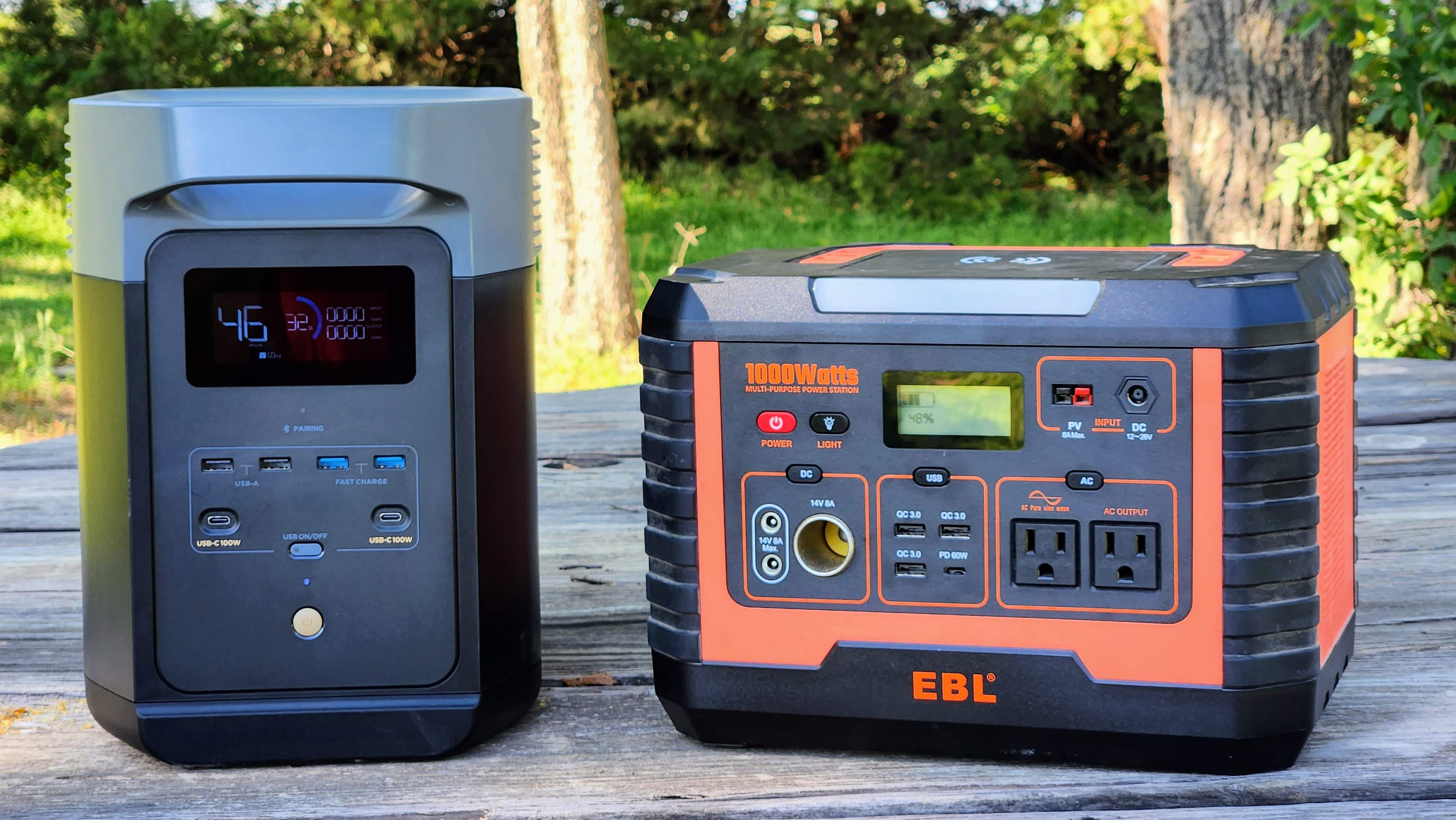
As for the other competitor, the EcoFlow Delta 2, it boasts many of the same impressive technologies found in the excellent EcoFlow Delta Pro — but in a much smaller package. While it is smaller than the Delta Pro with a very informative display and app support, it is a fair bit larger and heavier than the Voyager 1000. However, the Delta 2 makes excellent use of the bigger size, and in my time testing it I have been very impressed.
The EcoFlow Delta 2's 1024Wh lithium iron phosphate battery (LiFePO or LFP) not only offers 3000 recharge cycles, but boasts 1800W output with a surge up to 2200W from the six AC outlets. Along with those outlets are two DC5521 ports, a 12V car socket, four USB-A, and two 100WPD USB-C ports. Just as impressive as the output is the input: Using EcoFlow's X-Stream technology, the Delta 2 can be recharged from 0-80% in just 50 minutes, with a full charge in 80 minutes using solar, car adapter, wall outlet, or USB-C. Oh, the wall adapter is simply a cable as the inverter is built into the power station.
Should the Delta 2's battery not offer enough capacity, it can be expanded with additional smart batteries from EcoFlow for up to 3KWh. However, you won't find any wireless charging pads or an LED area lamp. While those missing things are unfortunate, the utility the Delta 2 offers is hard to argue with. If the Delta 2 interests you, you'll have to wait until September 16 when it goes on sale for $999.
EBL Voyager 1000: Should you buy it?
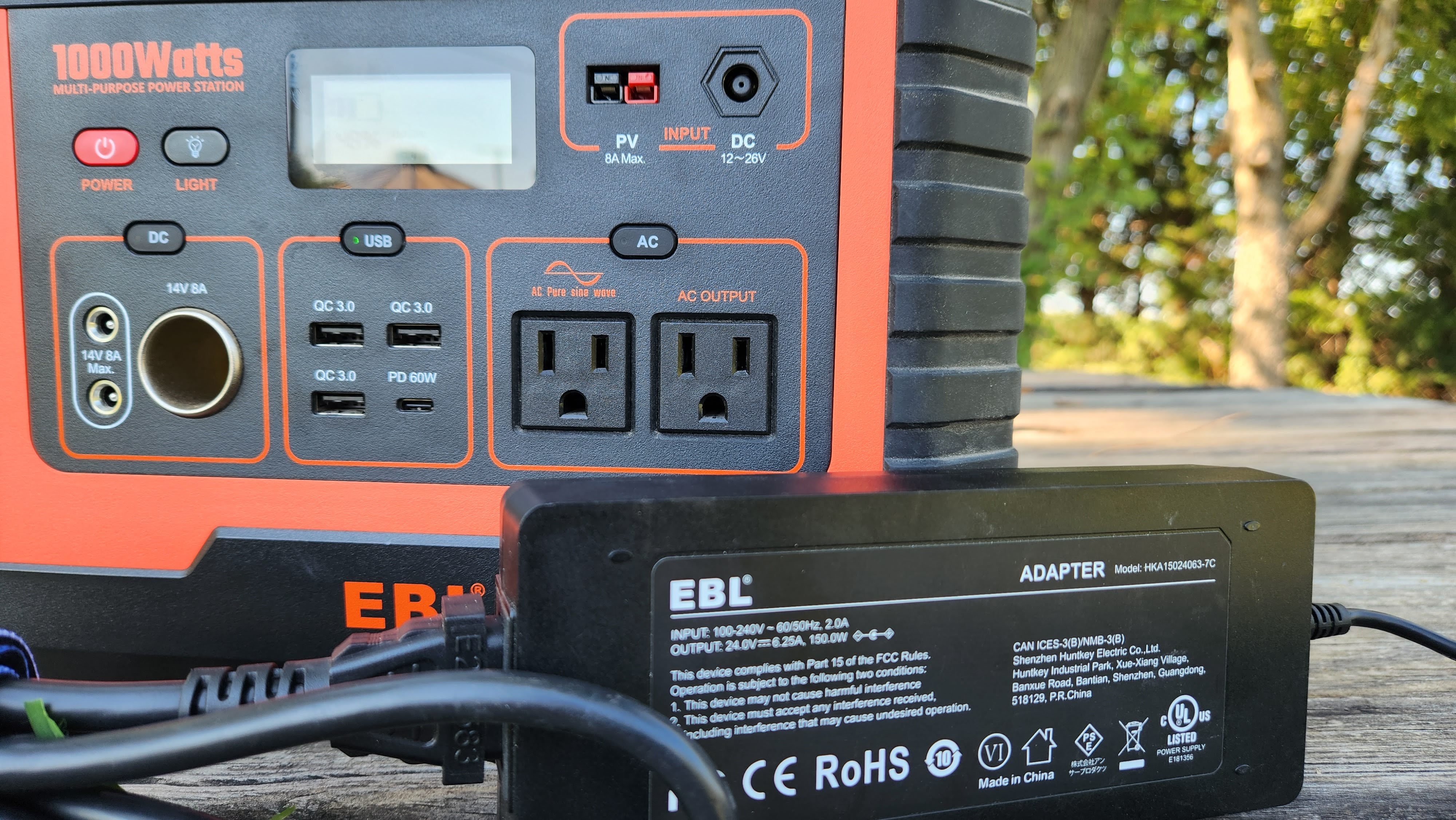
You should buy this if...
- You want a high output power station.
- You want your power station to be compact.
- You want a power station with a built-in LED area light and a wireless charging pad.
You shouldn't buy this if...
- You need more than 1000W of output.
- You need your power station to recharge quickly.
- You need more than one USB-C port.
Overall, the EBL Voyager 1000 is generally a solid choice for a power station. But the areas where it stands out are that it has a 1000W output rating, offers a good number of ways to utilize that power, including a wireless charging pad, and is very compact for its capacity.
The biggest downside of this portable power station is the limited input rating of 150W from the wall adapter. It's fine, but if you need it to recharge really fast, this won't do it. Another point to consider is the single USB-C port that is only used for output and a maximum of 60W PD. So if you are invested in USB-C to USB-C cables for your devices, you may want to either get adapters or skip this power station.
While the EBL Voyager 1000 isn't the flashiest power station, nor does it have everything I want in a device like this, it will still likely have a regular spot on my camping excursion, and live in my home for emergencies. This is mostly because it has enough output options for most situations, has a good output rating, and doesn't take up a lot of space. So, if you are of a similar mind, you should consider the EBL Voyager 1000.
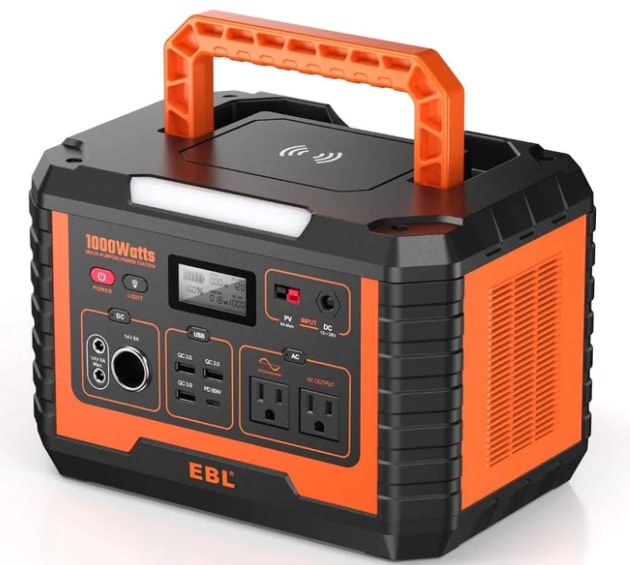
If a compact portable power station with 1000W of output and enough ports to handle nearly any device fit into a compact box is what you are looking for, then the EBL Voyager 1000 is a good choice. Just don't expect it to recharge super fast.

